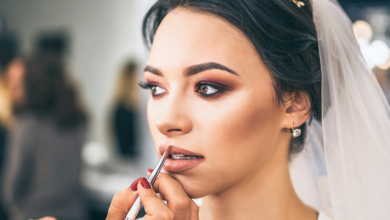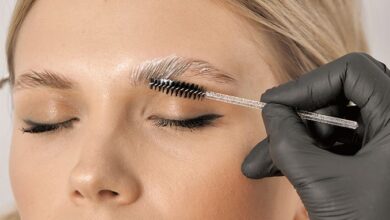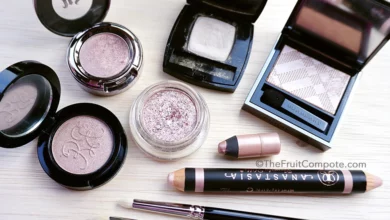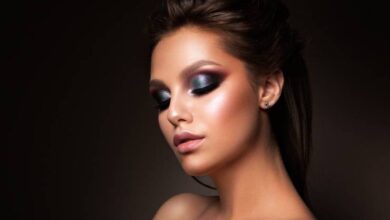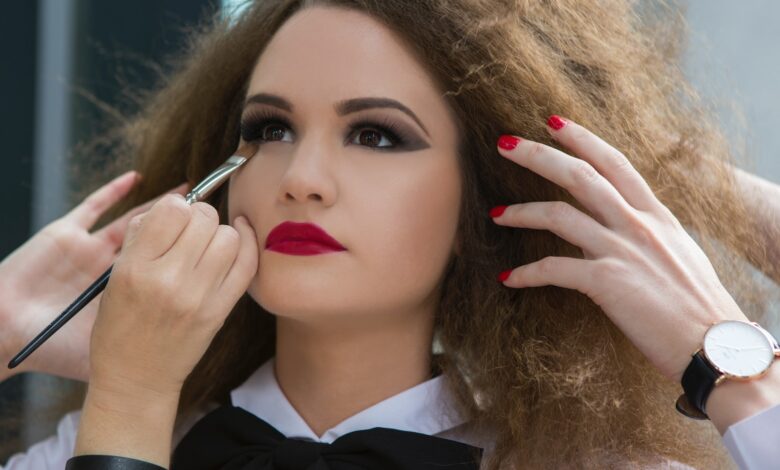
Are you tired of struggling to find the right makeup combination that perfectly complements your features? Look no further! In this article, we will explore the art of color coordination when it comes to matching your eye makeup with lipstick. With simple tips and tricks, you’ll be able to effortlessly create stunning looks that bring out the best in your natural beauty. From bold and dramatic to subtle and understated, get ready to discover a world of possibilities as we dive into the realm of color coordination. Get ready to shine!
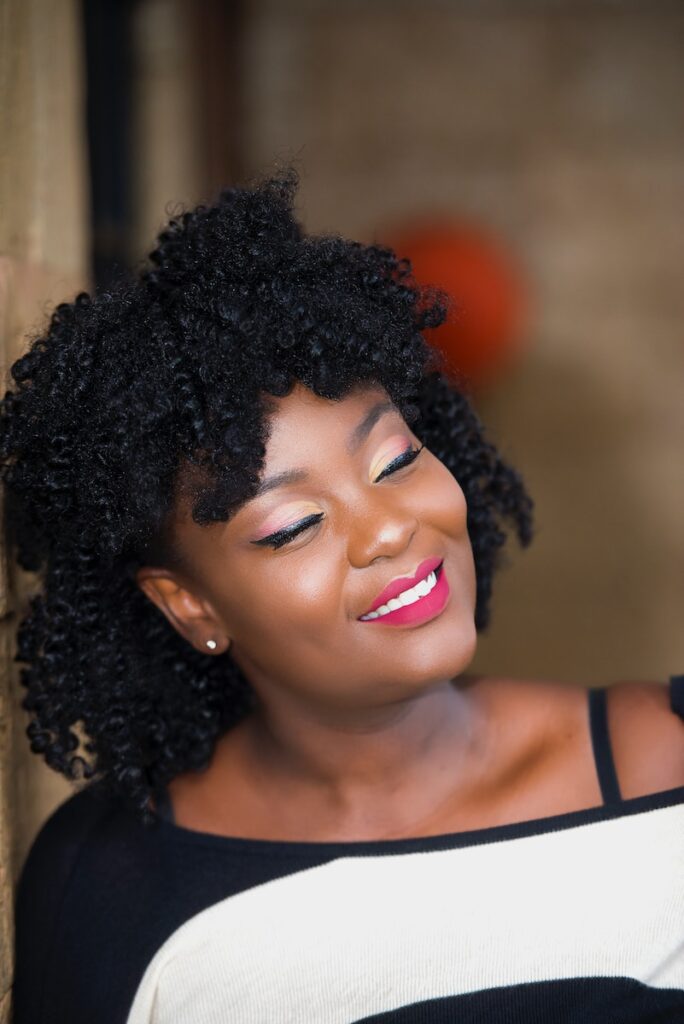
Understanding Color Theory
When it comes to makeup, color coordination is key. Understanding color theory is the foundation for creating harmonious and balanced looks. One essential tool in color theory is the color wheel.
The Color Wheel
The color wheel is a visual representation of the relationships between different colors. It consists of twelve colors that are arranged in a circular format. The primary colors, which cannot be created by mixing other colors, are red, blue, and yellow. By combining these primary colors, secondary colors are created: orange, green, and purple. Tertiary colors are formed by mixing a primary color with a neighboring secondary color on the wheel.
Primary, Secondary, and Tertiary Colors
Primary colors are the foundation of all other colors, and they play a crucial role in color theory. Secondary colors are created by mixing two primary colors together, while tertiary colors are formed by mixing one primary color with one secondary color. Understanding the relationships between these colors allows for effective color coordination in makeup.
Warm and Cool Colors
Warm and cool colors are another important aspect of color theory. Warm colors, such as reds, oranges, and yellows, create a sense of vibrancy and energy. In contrast, cool colors like blues, greens, and purples evoke a calming and soothing effect. Understanding the distinction between warm and cool colors is vital for choosing the right makeup shades that complement your skin tone and personal style.
Complementary Colors
Complementary colors are pairs of colors that are opposite each other on the color wheel. When placed together, complementary colors create a high contrast and vibrant effect. For example, red and green are complementary colors, as are blue and orange. Utilizing complementary colors in your makeup look can create a visually striking and balanced appearance.
Analogous Colors
Analogous colors are groups of colors that are adjacent to each other on the color wheel. These colors tend to create a harmonious and cohesive look when used together. For instance, yellow, orange, and red are analogous colors. Incorporating analogous colors into your makeup can result in a polished and aesthetically pleasing appearance.
Monochromatic Colors
monochromatic colors are different shades of the same color. This type of color scheme is synonymous with elegance and simplicity. It involves using different tones and intensities of a single color to create a cohesive and sophisticated makeup look.

Choosing the Right Eye Makeup Shade
When selecting eye makeup shades, it’s essential to consider factors such as your eye color, undertone, and the desired overall look. By taking these elements into account, you can enhance your natural features and create an eye-catching look.
Consider Your Eye Color
Your eye color plays a fundamental role in determining which eye shadow shades will complement them. For instance, if you have blue eyes, warm earthy tones such as browns and coppers will make your eyes pop. On the other hand, purple or taupe shades will beautifully complement green eyes, while gold and bronze shades will enhance brown eyes.
Determining Your Undertone
Understanding your undertone is crucial when selecting eye makeup shades. Undertones can be generally categorized as warm, cool, or neutral. Warm undertones typically go well with earthy and golden hues, while cool undertones can be enhanced with shades like purples and blues. Neutrals tend to have more versatility and can experiment with a wide range of colors.
Enhancing Your Natural Eye Color
If you want to enhance the natural color of your eyes, consider using complementary shades. For example, if you have blue eyes, using orange or peach-toned eyeshadows will create a beautiful contrast. Experiment with different shades to see which ones bring out the most captivating aspects of your natural eye color.
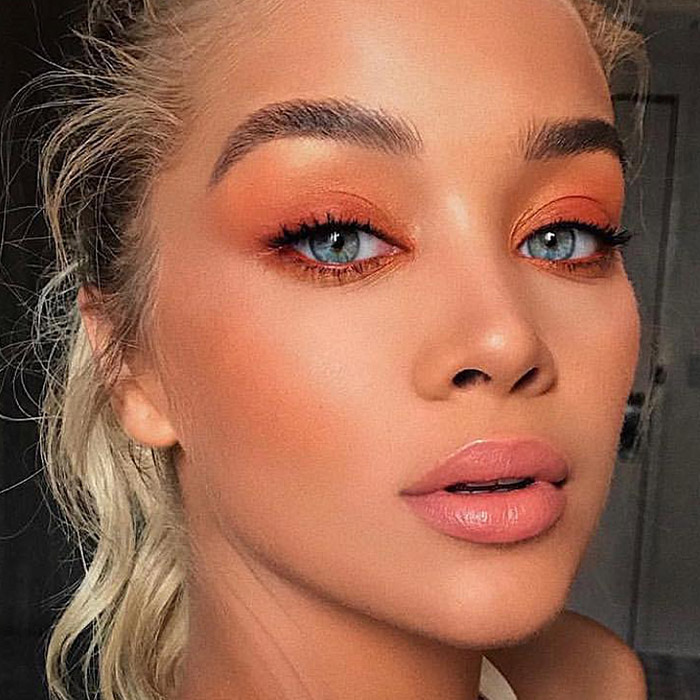
Selecting Eyeshadow Finishes
Eyeshadows come in a variety of finishes, including matte, shimmer, satin, and metallic. Choosing the right finish can elevate your eye makeup look. Generally, matte finishes are more suitable for a natural and subtle look, while shimmer and metallic finishes add glamour and depth. Satin finishes offer a balanced option, providing a soft sheen without being overly sparkly.
Daytime vs. Evening Eye Makeup
Consider the occasion and time of day when choosing eye makeup shades. For daytime looks, opt for more neutral and subtle shades that enhance your features without being overpowering. In contrast, for evening or special occasions, you can experiment with bolder and more intense colors to create a glamorous and dramatic look.
Tips for Different Eye Shapes
Each eye shape has its own unique features and characteristics. By understanding your eye shape, you can apply eye makeup in a way that accentuates and flatters your eyes. For example, if you have hooded eyelids, applying a darker shade on the crease and a lighter shade on the lid can create the illusion of depth. Likewise, those with almond-shaped eyes can experiment with various colors and techniques to enhance their natural shape.
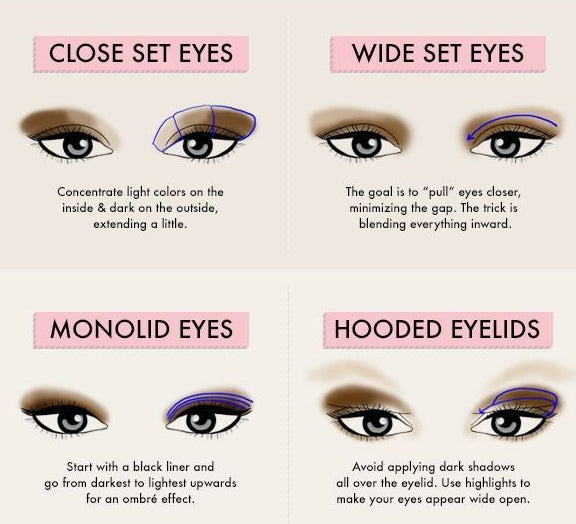
Selecting the Perfect Lipstick Hue
Choosing the right lipstick hue is equally important as selecting eye makeup shades. The color of your lipstick can dramatically transform your overall makeup look and complement your skin tone.
Understanding Your Skin Tone
Understanding your skin tone is essential when selecting lipstick shades. Skin tones can generally be categorized as cool, warm, or neutral. Cool-toned individuals tend to have pink or blue undertones, while warm-toned individuals have undertones of yellow or olive. Neutral skin tones have a balanced combination of warm and cool undertones. Determining your skin tone will guide you in choosing lipstick shades that enhance your natural complexion.
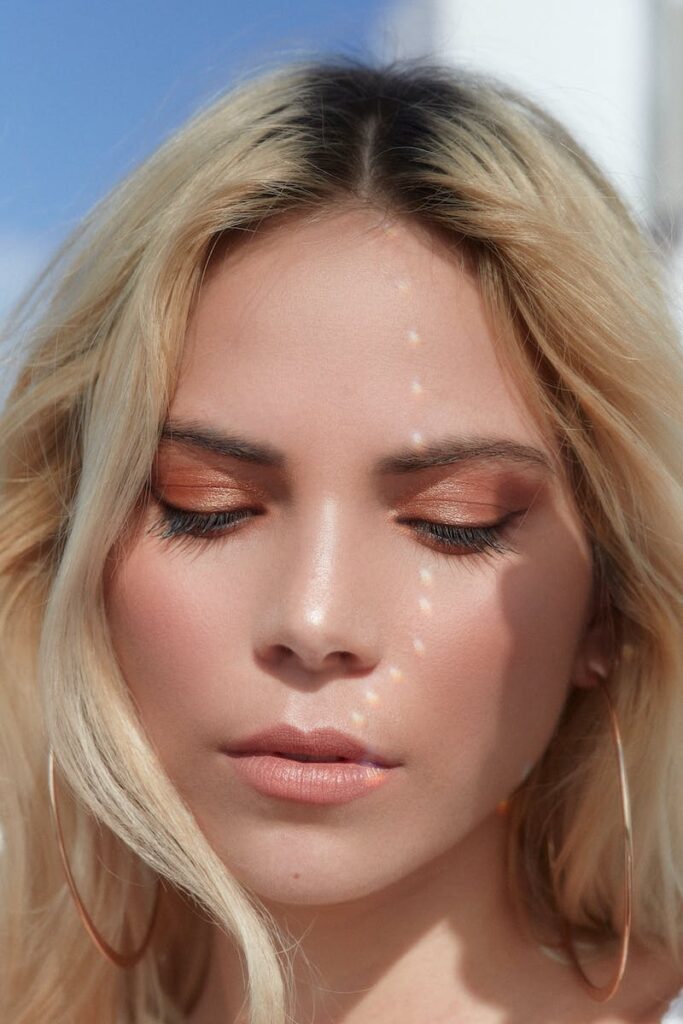
Identifying Your Undertone
Similar to choosing eye makeup, identifying your undertone is crucial for selecting the perfect lipstick hue. Warm undertones can be complemented with shades like coral, peach, or brick red. Cool undertones can opt for blue-based reds, pinks, or berry shades. Neutrals can experiment with various hues and find shades that bring out the best in their natural undertones.
Complementary Lipstick Shades
Using complementary lipstick shades can create a harmonious and balanced look with your eye makeup. For example, if you have warm-toned eye makeup, consider pairing it with a lipstick shade that has warm undertones as well. This will create a cohesive and polished appearance.
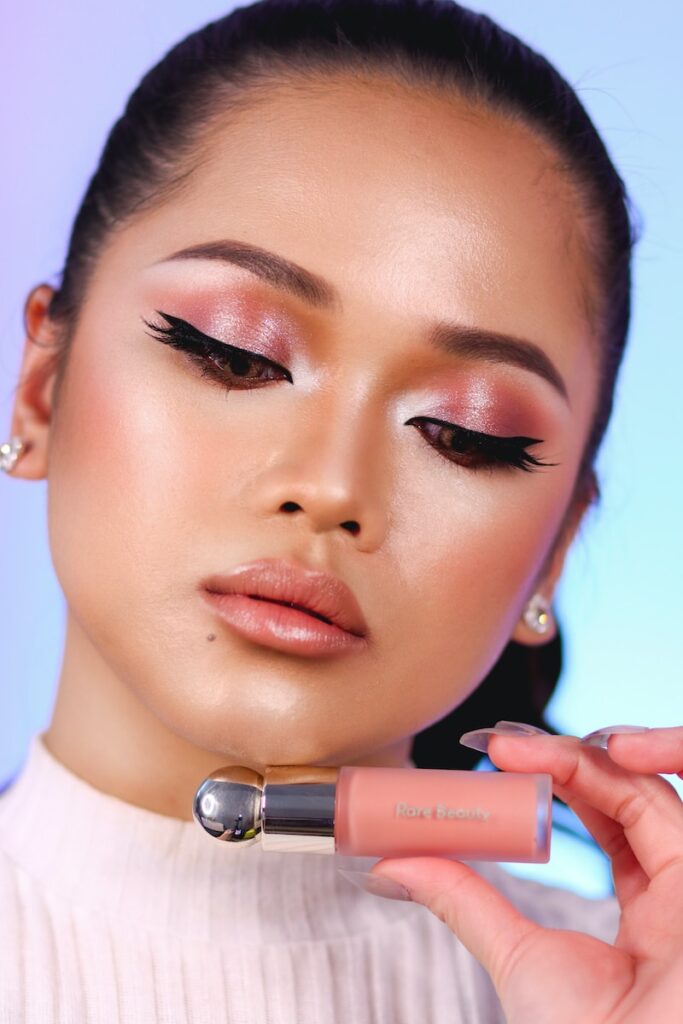
The Power of Nude Lipsticks
Nude lipsticks are incredibly versatile and can be found in a wide range of shades, from light beige to deep brown. Nude lipsticks offer a natural and effortless look that complements various eye makeup styles. Selecting the right nude lipstick hue that matches your skin tone and undertones will give you a sophisticated and elegant finish.
Bold vs. Subtle Lipstick Choices
The intensity of your lipstick choice depends on your personal preference and the overall makeup look you want to achieve. Bold lipstick choices, such as vibrant reds or deep burgundies, can make a statement and serve as the focal point of your look. On the other hand, subtle and muted shades like soft pinks or dusty roses offer a more natural and understated appearance.
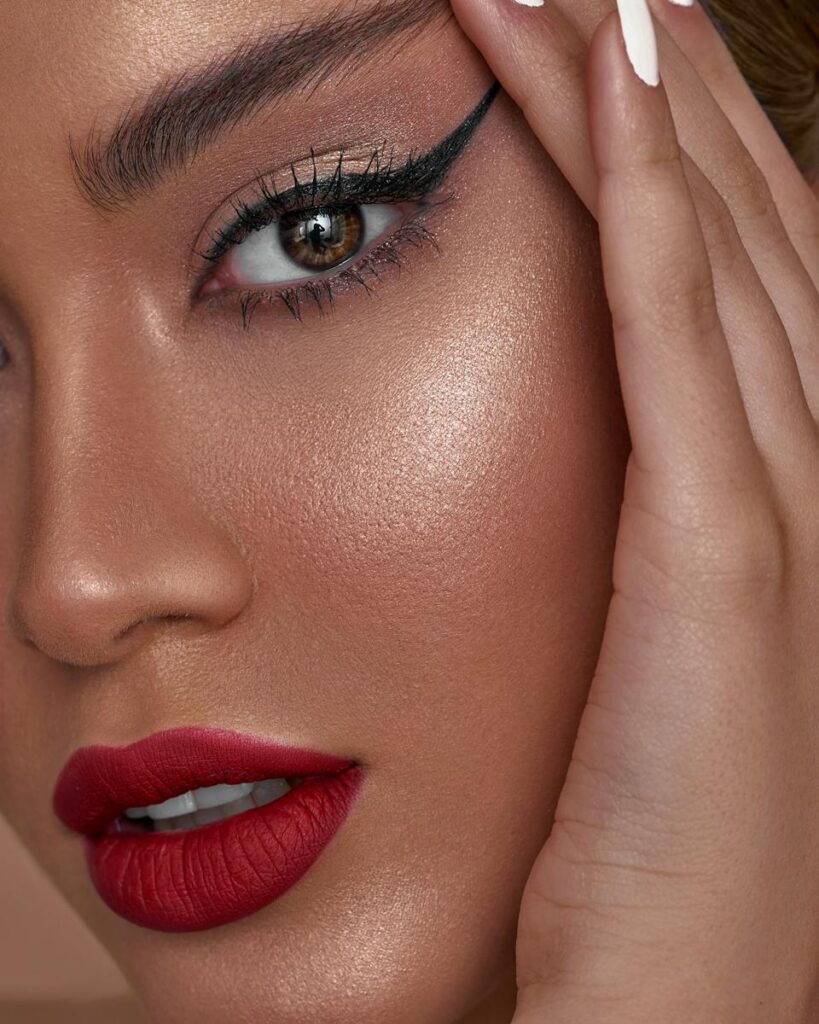
Lipstick Finishes and Textures
Lipsticks come in various finishes, including matte, satin, glossy, and sheer. Each finish has its own unique effect on the overall look. Matte lipsticks offer a flat and opaque finish, while satin finishes provide a soft and creamy touch. Glossy finishes create a lustrous and shiny appearance, while sheer lipsticks give a subtle and more natural look. Experimenting with different finishes can add dimension and variety to your overall makeup looks.
Harmonizing Eye Makeup and Lipstick
Once you have chosen the perfect eye makeup shade and lipstick hue, it’s important to harmonize them to create a cohesive and balanced look. By considering color theory and understanding complementary and analogous colors, you can effortlessly create eye-catching combinations.
Matching Warm Eye Makeup with Warm Lipstick
If you have warm-toned eye makeup, such as bronze or gold shades, complement it with a warm-toned lipstick. Opt for shades like peach, coral, or brick red to create a seamless and harmonious look. This combination will bring warmth and cohesiveness to your overall makeup appearance.
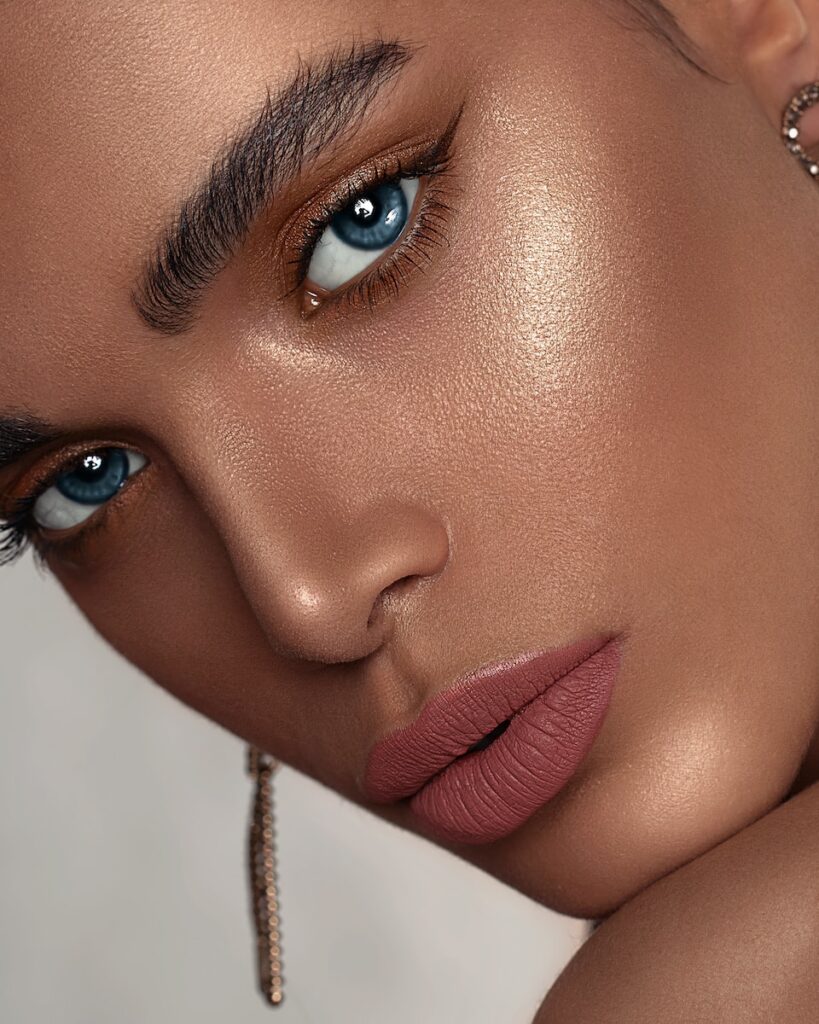
Pairing Cool Eye Makeup with Cool Lipstick
For those who prefer cool-toned eye makeup, like purples or blues, pair it with a cool-toned lipstick shade. Consider using blue-based reds, pinks, or berry colors to complement your cool eye makeup. This combination will create a visually striking and balanced look.
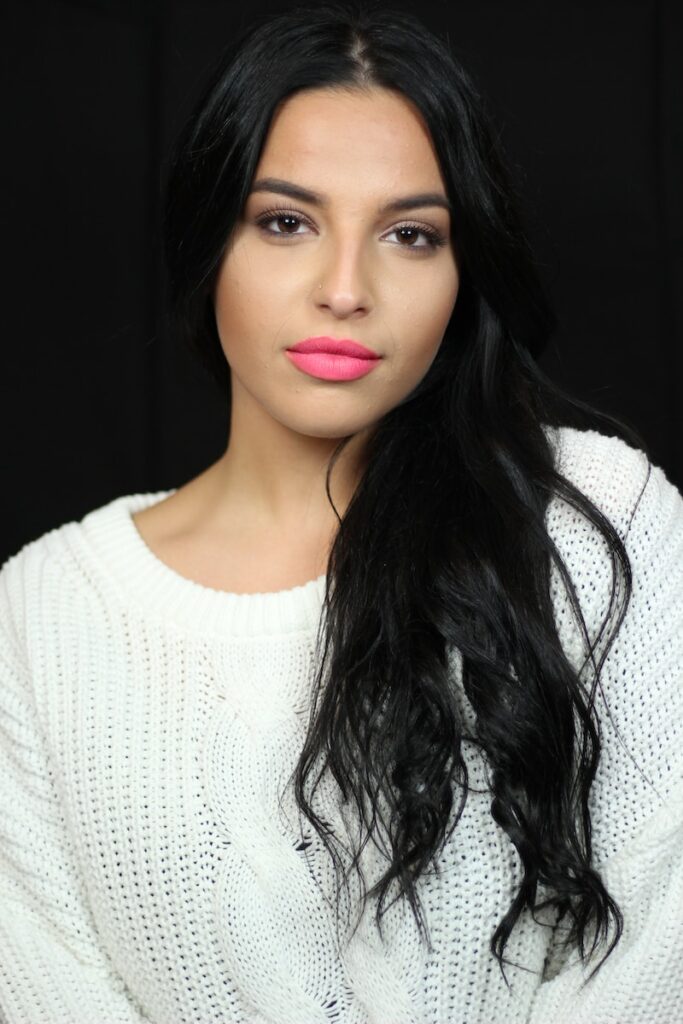
Creating Contrast with Complementary Shades
Complementary colors, as mentioned earlier, are pairs of colors that are opposite each other on the color wheel. By using complementary shades for your eye makeup and lipstick, you can create an eye-catching and bold contrast. For instance, if you have used blue or teal eyeshadow, consider pairing it with an orange or coral lipstick. This combination creates a vibrant and playful look.

Playing with Analogous Colors
Analogous colors are groups of colors that are adjacent to each other on the color wheel. These colors tend to create a more harmonious and cohesive look when used together. For example, if you have used warm orange eyeshadow, pair it with a complementary warm-toned lipstick shade such as red-orange or terracotta. This combination creates a seamless and polished appearance.
Monochromatic Makeup Looks
Monochromatic makeup looks involve using different shades and tones of the same color family. This approach creates an elegant and sophisticated appearance. For instance, if you have used various shades of purple eyeshadow, choose a lipstick shade that complements the undertones of the purple, such as a cool-toned mauve or lavender. This monochromatic combination offers a cohesive and visually appealing makeup look.
Perfecting the Balance of Intensity
When harmonizing eye makeup and lipstick, it’s important to consider the intensity of both elements. If you have opted for a bold and vibrant eye makeup look, consider pairing it with a more subtle and muted lipstick shade. On the other hand, if you have chosen a striking and intense lipstick color, balance it out with more neutral and understated eye makeup. Finding the right balance of intensity ensures that both elements complement each other without overwhelming the overall look.
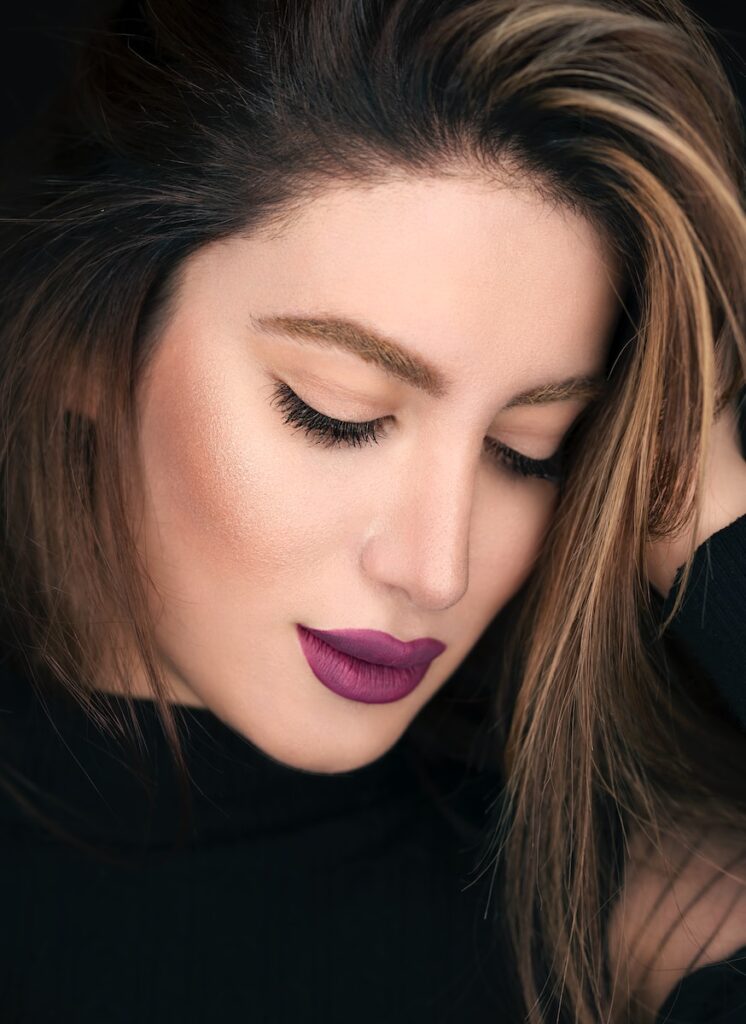
Eye Makeup and Lipstick Combinations for Different Occasions
Different occasions call for different makeup looks. Whether it’s a natural everyday look, glamorous evening makeup, or an office-friendly choice, understanding how to coordinate your eye makeup and lipstick is essential.
Natural Everyday Makeup
For a natural everyday makeup look, go for neutral and subtle shades. Opt for light and earthy tones for your eye makeup, such as soft browns or taupes. Pair it with a nude or MLBB (My Lips But Better) lipstick shade. This combination will enhance your features without appearing too heavy or dramatic, making it perfect for a casual or professional setting.
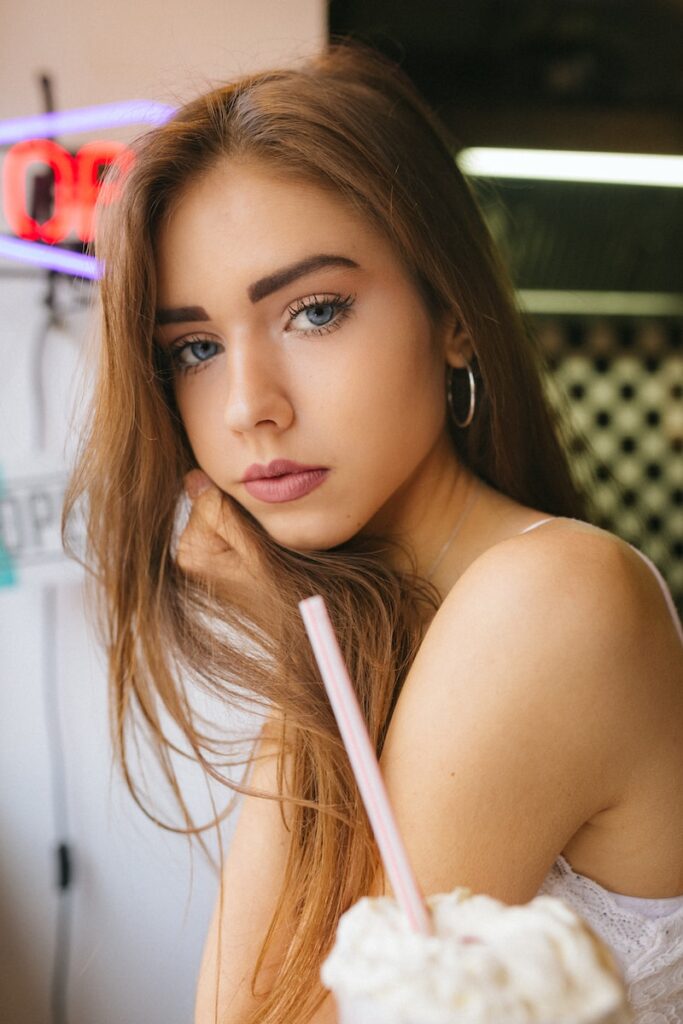
Glamorous Evening Looks
Glamorous evening looks call for more intense and bold makeup choices. Emphasize your eyes with darker and more vibrant shades, such as deep purples or smoky grays. Pair this with a statement lipstick shade, such as a bold red or a deep berry color. This combination exudes elegance and sophistication, perfect for a night out or special events.
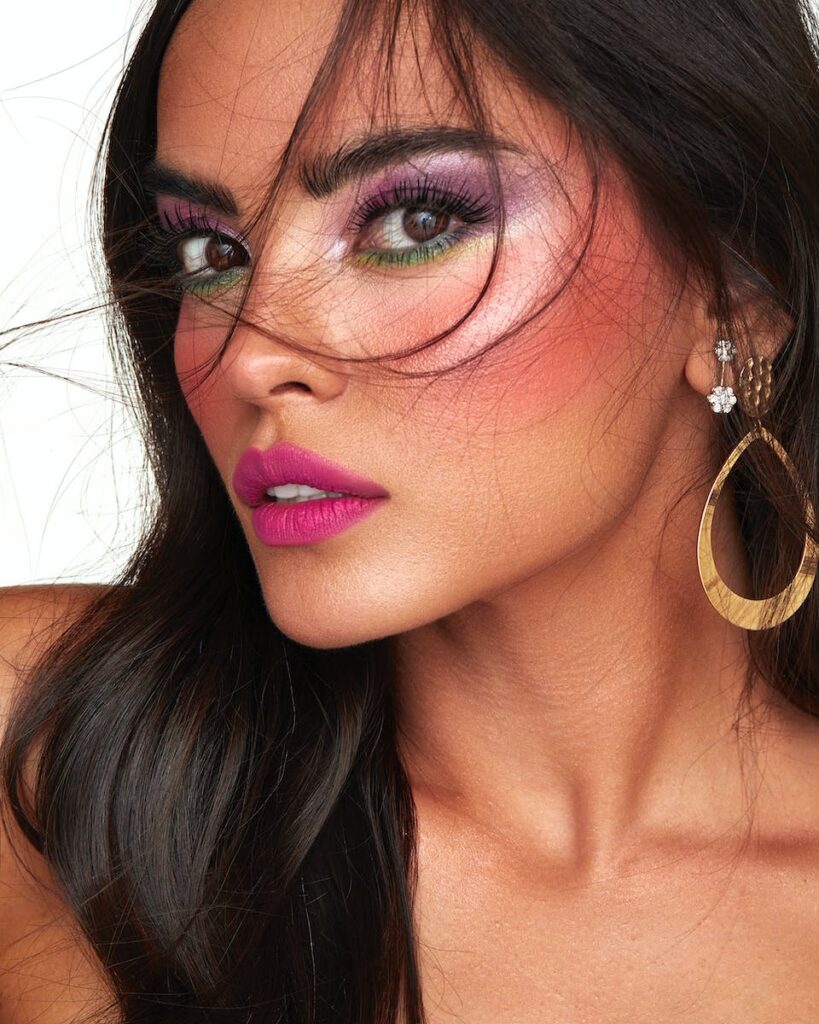
Office-Friendly Makeup Choices
For office-friendly makeup, it’s important to strike a balance between professionalism and personal style. Opt for neutral and polished eye makeup looks, such as soft browns or subtle shimmers. Pair it with a lipstick shade that complements your undertones and adds a touch of sophistication, like a soft pink or a neutral mauve. This combination maintains a professional and put-together appearance while allowing you to express your personal style.
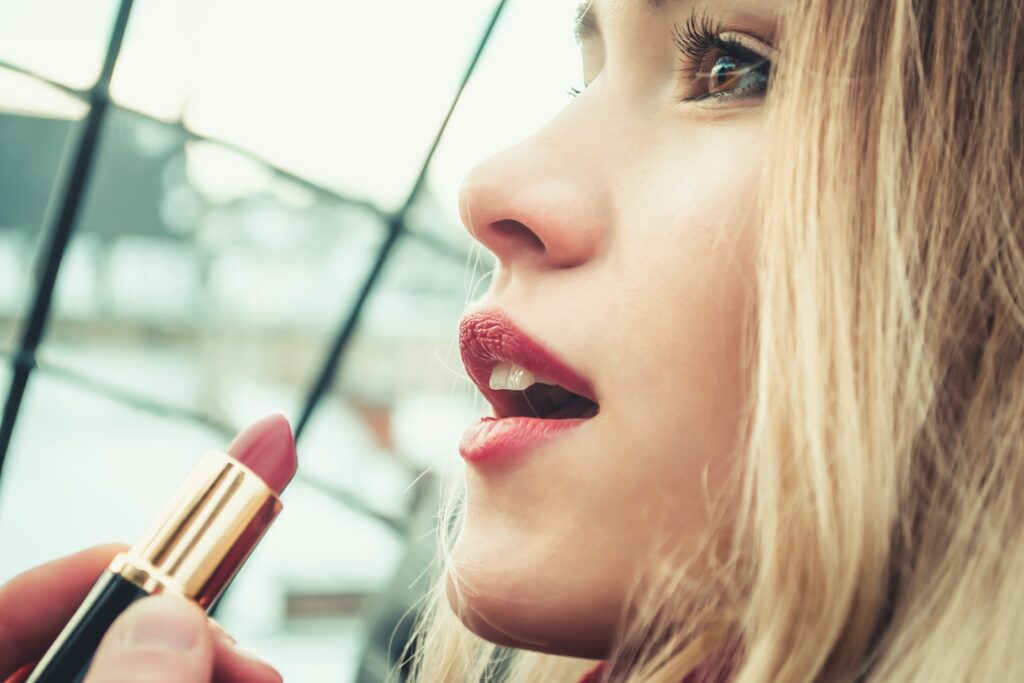
Statement Makeup for Special Events
Special events call for statement makeup looks that make you stand out from the crowd. Experiment with dramatic eye makeup, using bold and metallic shades like gold or silver. Pair it with a lipstick shade that complements the overall color scheme of your makeup look. For example, if you have used jewel tones like emerald green or sapphire blue for your eye makeup, consider pairing it with a rich and deep plum lipstick. This combination creates a striking and memorable look.

Seasonal Makeup Trends
Seasonal makeup trends often revolve around the colors and themes associated with each season. For spring, embrace soft and pastel shades for your eye makeup, such as pinks and lilacs. Pair it with a fresh and vibrant lipstick shade, like a coral or a rosy pink. During the summer months, experiment with brighter and bolder eye makeup, such as vibrant blues or tropical greens. Pair it with a fun and playful lipstick shade, such as a bright fuchsia or a juicy orange. Autumn calls for warmer and earthy tones for your eye makeup, such as burnt oranges or deep browns. Pair it with a rich and cozy lipstick shade, such as a brick red or a warm terracotta. For winter, embrace cool and icy shades for your eye makeup, such as silvers or icy blues. Pair it with a bold and glamorous lipstick shade, such as a deep burgundy or a classic red.
Tips for Bridal Makeup
Bridal makeup requires careful consideration to ensure the bride looks radiant and flawless on her special day. Opt for natural and soft eye makeup looks, using neutral and subtle shades. Enhance the eyes with individual eyelashes or natural-looking false lashes. Pair it with a soft and romantic lipstick shade, such as a rosy pink or a neutral pinky-brown. This combination creates a timeless and elegant bridal look that enhances the bride’s natural beauty.
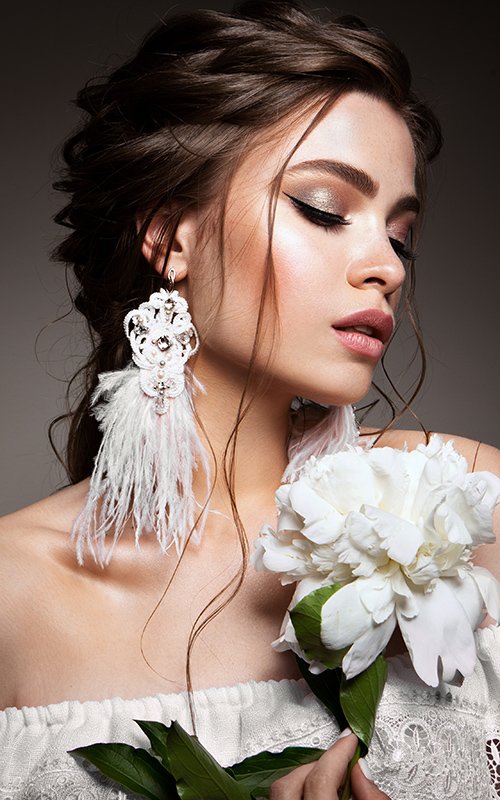
Experimenting with Bold and Unique Color Combinations
While it’s important to understand the principles of color coordination, don’t be afraid to break the rules and embrace your creativity. Experimenting with bold and unique color combinations can lead to stunning and unexpected results.
Breaking the Rules and Embracing Creativity
Sometimes, the most striking makeup looks come from breaking the traditional color rules and experimenting with unconventional combinations. Don’t be afraid to mix shades that are not typically paired together. For example, try combining a cool-toned eyeshadow with a warm-toned lipstick or vice versa. Embracing your creativity can result in unique and personalized looks that truly reflect your individuality and style.
Mixing Contrasting Colors for Impact
Contrasting colors, such as blue and orange or green and purple, create captivating and impactful makeup looks. When combining contrasting colors, it’s important to balance the intensity and placement of each shade. Focus on one feature, such as the eyes or lips, and allow the contrasting shade to be the focal point. This creates a bold and eye-catching look that commands attention.
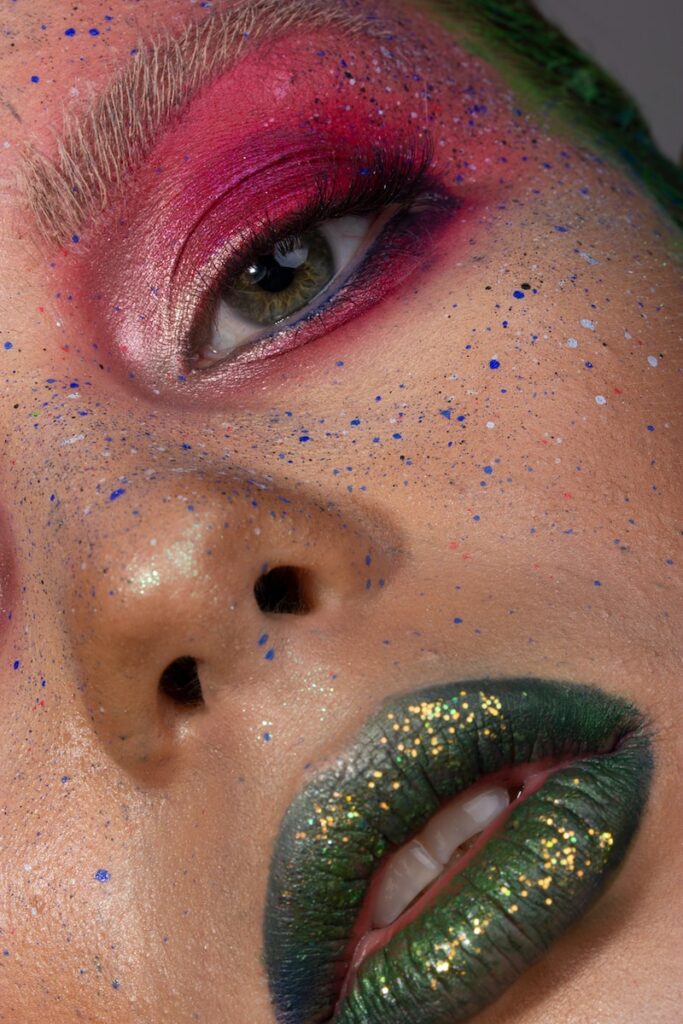
Incorporating Metallic and Shimmer
Metallic and shimmer finishes add depth and dimension to your makeup looks. Experimenting with metallic eyeshadows or shimmery lipsticks can elevate your overall appearance. Pairing a metallic eyeshadow with a complementary matte lipstick creates an interesting contrast, while a shimmery lipstick can add a touch of glamour to a more understated eye makeup look.
Gradient and Ombre Effects
Gradient and ombre effects involve blending multiple shades seamlessly to create a smooth transition of colors. Experimenting with gradient eyeshadow looks, where one shade transitions into another, can create a mesmerizing and artistic appearance. Similarly, applying a gradient effect to your lips, where one shade blends into another, can create a unique and captivating look.
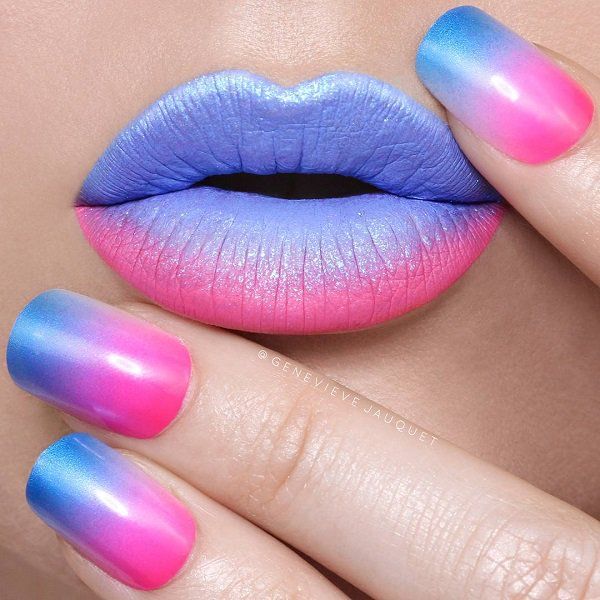
Tips for Pulling Off Unusual Color Combinations
Pulling off unusual color combinations is all about confidence and experimentation. Start by exploring shades that you are naturally drawn to. Experiment with different combinations and placement of colors. It’s important to trust your intuition and find combinations that make you feel beautiful and empowered. Don’t be afraid to try new things and push the boundaries of traditional color coordination.
Using Color Wheel Tools for Inspiration
When seeking inspiration for bold and unique color combinations, color wheel tools can be incredibly helpful. There are online color wheel tools that allow you to select one color and generate complementary or analogous shades. This can provide a starting point for creating unconventional makeup looks. By using color wheel tools as a guide, you can find new and exciting combinations that you may not have considered before.
Tips for Proper Application Techniques
In addition to color coordination, applying your eye makeup and lipstick correctly is essential for achieving a flawless and polished result. Here are some tips for mastering application techniques.
Prepping the Eyes and Lips
Before applying eye makeup, ensure that your eyelids are clean and free of any oil or debris. Apply an eyeshadow primer to create a smooth and even canvas for your eyeshadow. For the lips, exfoliate them gently to remove any dead skin and apply a lip balm to moisturize and hydrate.
Blending Eyeshadow for a Seamless Look
Blending is the key to achieving a seamless and professional eyeshadow look. Start with lighter shades in the inner corners of your eyes and gradually build up to darker shades on the outer corners. Use a clean blending brush to blend the edges of each shade together, creating a smooth transition of colors.
Achieving Long-lasting Lipstick
To ensure that your lipstick lasts throughout the day, start by applying a lip liner that matches or complements your lipstick shade. This creates a defined lip shape and prevents feathering or bleeding. Fill in your lips with the lip liner as a base, then apply your lipstick with a lip brush for precision. Blot your lips with a tissue and apply a second layer of lipstick for longevity.
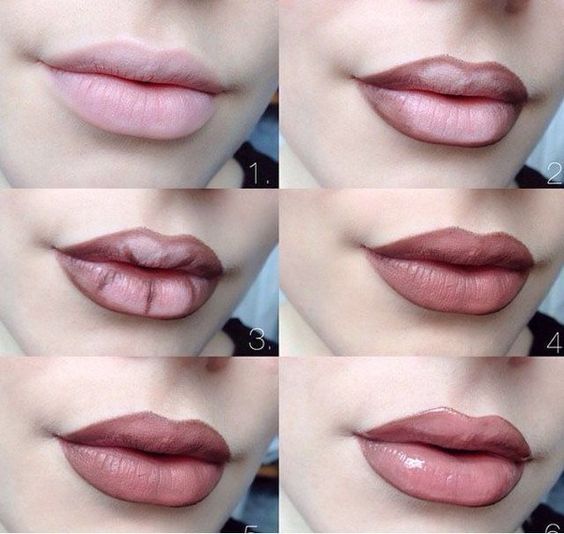
Contouring and Highlighting the Eyes
Contouring and highlighting the eyes can create dimension and add depth to your eye makeup look. Use a matte eyeshadow shade that is slightly darker than your skin tone to contour the crease of your eyes. Apply the contour shade in the crease and blend it outwards for a more lifted effect. Use a shimmery highlight shade on the brow bone and inner corners of the eyes to make them appear brighter and more awake.
Tricks for Fuller or Smaller Lips
To create the illusion of fuller lips, apply a lip liner that is slightly darker than your natural lip color just outside your natural lip line. Fill in the lips with a lipstick shade that complements your skin tone. Finish by applying a lip gloss to the center of your lips to add dimension and create the appearance of fullness. Conversely, if you want to make your lips appear smaller, apply a lip liner that matches your natural lip color just inside your lip line and fill in with a matte lipstick.
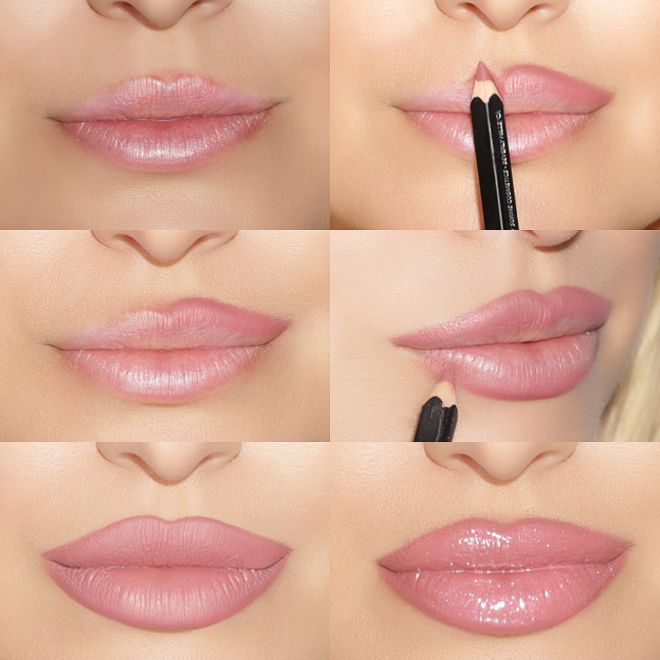
Avoiding Clashing Color Combinations
While experimenting with different color combinations is encouraged, it’s important to avoid clashing colors. If combining contrasting shades, ensure that they are harmoniously balanced and create a cohesive look. Pay attention to the intensity and placement of each color to prevent them from clashing and overpowering each other.
The Perfect Balance: Enhancing One Feature at a Time
Enhancing one feature at a time is a great way to create balance and allow that feature to shine. By focusing on either the eyes or the lips, you can create a polished and cohesive look.
Focusing on Eyes with Neutral Lips
To emphasize your eye makeup, choose neutral and subtle lip colors that don’t compete with your eye makeup. Opt for nude or MLBB shades that complement your skin tone and provide a natural-looking finish. This allows your eye makeup to take center stage while still maintaining a harmonious and balanced look.
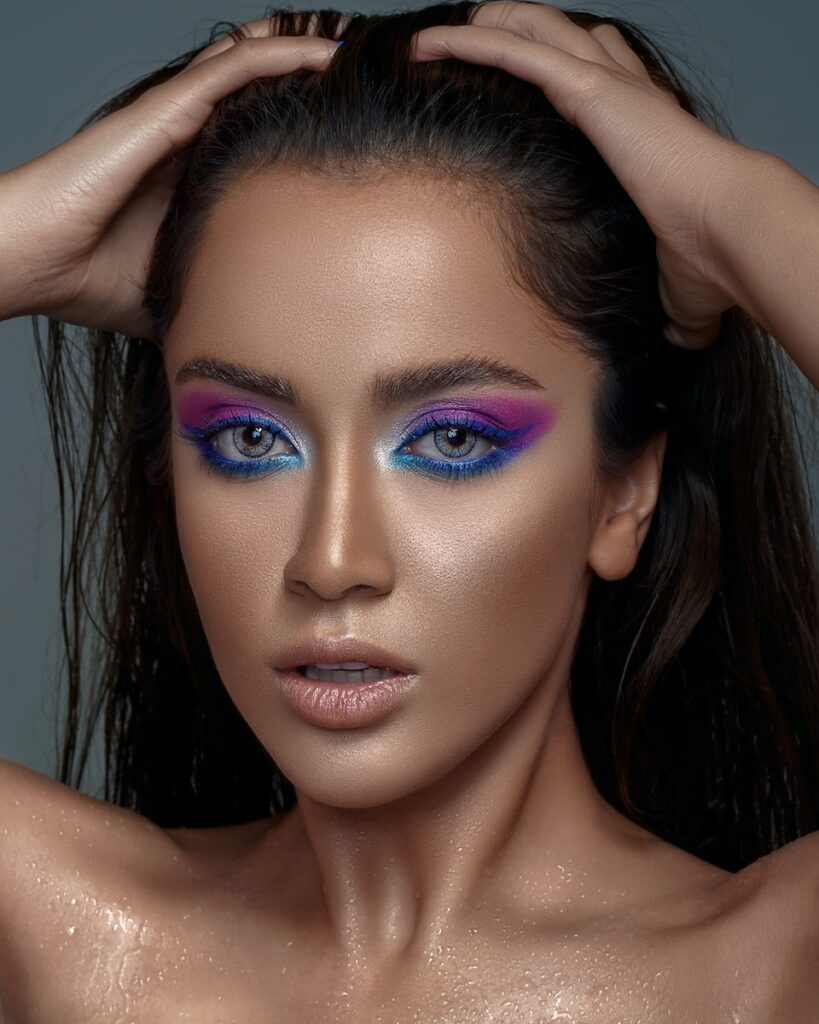
Accentuating Lips with Subtle Eye Makeup
If you want to draw attention to your lips, keep your eye makeup subtle and understated. Neutral and matte eyeshadows in soft browns or taupes provide a natural and polished backdrop for bold lipstick shades. By accentuating your lips while keeping your eye makeup minimal, you can create a captivating and glamorous look.

Choosing a Statement Feature
Alternatively, you can choose to focus on one feature as the statement piece of your makeup look. Whether it’s bold and dramatic eye makeup or a vibrant and intense lipstick color, focusing on one feature allows it to become the focal point and grab attention. Keep the rest of your makeup balanced and minimal to allow your statement feature to shine.
Creating a Cohesive Look
When enhancing one feature at a time, it’s important to create a cohesive look that ties everything together. Consider the undertones and colors used in your eye makeup and lipstick to ensure they complement each other. Pay attention to the balance of intensity and placement to create a harmonious and polished overall look.
Adapting Your Makeup to Different Outfits
Matching your makeup to your outfit can create a cohesive and put-together look. Consider the colors and tones in your outfit when selecting your eye makeup and lipstick shades. For example, if you’re wearing a bold and vibrant dress, consider opting for a neutral eye makeup look and a complementary lipstick shade to balance the overall appearance. Adapting your makeup to different outfits ensures that everything works harmoniously together.

Highlighting Your Best Features
Enhancing your best features is a great way to create a focal point in your makeup look. Whether it’s your eyes, lips, or cheekbones, use appropriate makeup techniques and shades to draw attention to these areas. Emphasizing your best features enhances your natural beauty and creates a confident and radiant look.
Professional Tips and Tricks from Makeup Artists
Makeup artists have a wealth of knowledge and experience when it comes to creating stunning makeup looks. Here are some professional tips and tricks to take your color coordination skills to the next level.
Bridging the Gap Between Eye and Lip Colors
To create a seamless transition between your eye and lip colors, consider incorporating a shade from your eye makeup into your lipstick choice. For example, if you have used a soft pink eyeshadow, opt for a lipstick shade that has a similar undertone or hue. This bridges the gap between your eye and lip colors and creates a cohesive and elegant makeup look.
Using Color Psychology to Convey Emotions
Color psychology is the study of how colors affect human emotions and behavior. Utilizing this knowledge can help you convey different emotions through your makeup looks. For example, warm and golden shades evoke feelings of warmth and happiness, while cool and icy tones create a sense of calmness and tranquility. Consider the emotions you want to convey and choose eye makeup and lipstick shades accordingly.
Correcting or Balancing Undertones
Understanding undertones is crucial for creating a harmonious and balanced makeup look. If you have warm undertones and have chosen cool-toned eye makeup, consider using a warm-toned lipstick shade to balance the overall appearance. Likewise, if you have cool undertones and have opted for warm-toned eye makeup, choose a cool-toned lipstick to complement the look. Correcting or balancing undertones ensures that your makeup looks cohesive and flattering.
Customizing Makeup for Different Skin Tones
Different skin tones require different approaches to makeup application. When working with clients or yourself, consider the unique characteristics of the skin tone and adapt your makeup choices accordingly. For example, dark skin tones can beautifully carry intense and vibrant colors, while fair skin tones can benefit from soft pastel shades. Customizing makeup for different skin tones ensures that everyone feels their best and most confident.
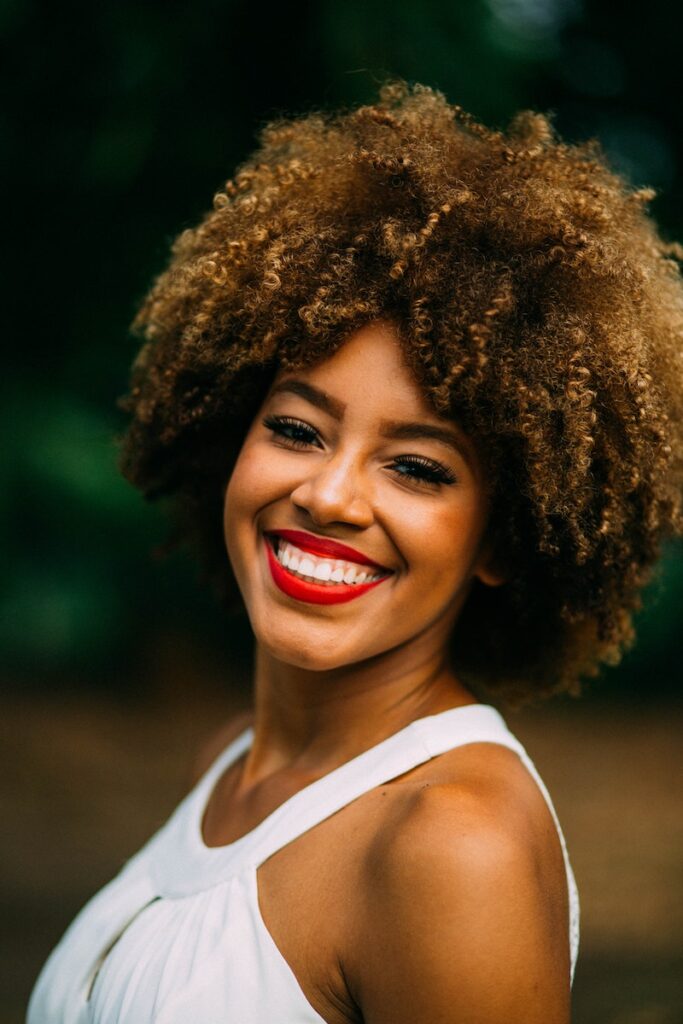
Achieving a Polished and Flawless Application
Creating a polished and flawless makeup application requires attention to detail and meticulous execution. Invest in high-quality brushes and tools that allow for precise application and blending. Apply your makeup in natural light to ensure that the colors and finishes are accurately reflected. Additionally, practice different techniques and strive for consistency and smooth application.
Experimenting with New Trends
Makeup is a constantly evolving art form, and new trends emerge regularly. Don’t be afraid to experiment with new techniques, products, and color combinations. Stay updated with the latest trends by following makeup artists, influencers, and brands on social media. Experimenting with new trends expands your knowledge and enables you to discover new and exciting makeup looks.
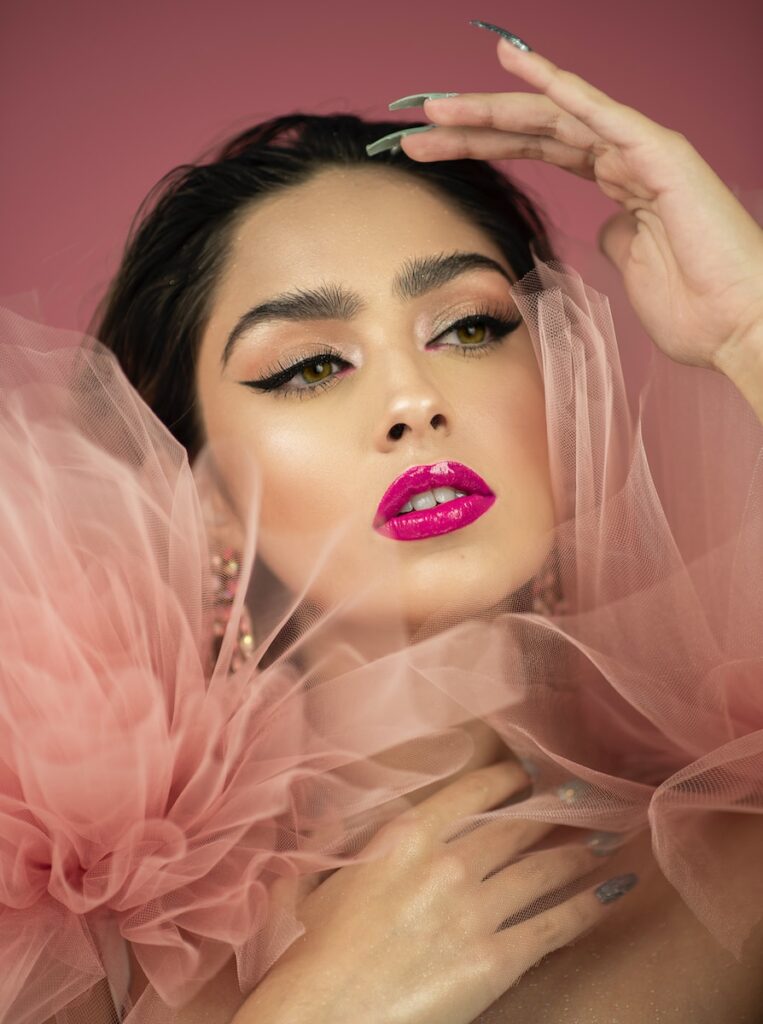
Conclusion: Mastering the Art of Color Coordination
Mastering the art of color coordination in makeup is about understanding the principles of color theory, experimenting with different shades and combinations, and adapting your techniques to enhance your best features. By harmonizing your eye makeup and lipstick, experimenting with different finishes and textures, and incorporating professional tips and tricks, you can create stunning and personalized makeup looks.
Embracing Your Personal Style
While color coordination principles serve as a guide, it’s essential to embrace your personal style and preferences. Use color theory as a foundation, but feel empowered to explore and experiment with different colors and combinations that reflect your unique personality and taste.
Building Confidence with Color Choices
Color choices in makeup have a significant impact on how you look and feel. When you find the perfect eye makeup and lipstick shades that complement your features and skin tone, it boosts your confidence and enhances your natural beauty. Building confidence with color choices allows you to express your individuality and radiate self-assuredness.
Practice Makes Perfect
Mastering color coordination and application techniques requires practice and patience. Experiment with different eyeshadow palettes, lipsticks, and finishes to gain a deeper understanding of what works best for you. With each application, you’ll refine your skills and become more adept at creating captivating makeup looks.
Experimenting and Having Fun
Makeup is a form of self-expression and creativity. Don’t be afraid to step out of your comfort zone and experiment with bold and unique color combinations. Have fun with your makeup and enjoy the process of creating different looks that reflect your mood, personality, and the occasion.
Exploring Limitless Possibilities
The world of makeup offers limitless possibilities, allowing you to continuously explore and discover new shades, techniques, and trends. Stay open-minded and be willing to step outside of traditional norms. This openness will bring excitement and innovation to your makeup looks.
Elevating Your Overall Makeup Look
By mastering color coordination and application techniques, you can elevate your overall makeup look and create stunning and polished results. Whether it’s for everyday or special occasions, your makeup choices can enhance your natural features, boost your confidence, and reflect your unique style. Embrace the power of color coordination and watch as your makeup looks become even more impactful and beautiful.

